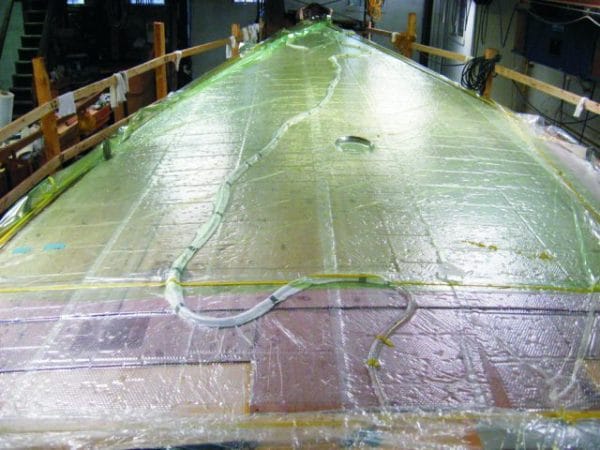vacuum bagging for laminating composite materials
This guide shows the principles and practical application of vacuum bagging for laminating composite materials with WEST SYSTEM® Epoxy.
Vacuum bagging is an essential technique for creating high-quality composite laminates. This guide covers its benefits and practical applications, including composite laminates’ superior quality and performance.
- Understand the theory of vacuum systems and the advantages of vacuum bag laminating
- Evaluate the equipment and materials used in vacuum bagging
- Examine and build the various types of moulds used for vacuum bag laminating
- Put the principles of vacuum pressure to practical use in typical vacuum bagging applications
Master the art of vacuum bagging using our comprehensive guide for expert advice and detailed instructions. Enhance your projects with precision and quality today through WEST SYSTEM® Epoxy.
What is vacuum bagging?
Vacuum bagging (or vacuum bag laminating) is a clamping method that uses atmospheric pressure to hold the adhesive or resin-coated components of a lamination in place until the adhesive cures. (When discussing composites, “resin” generally refers to the resin system—mixed or cured resin and hardener—rather than unmixed 105 epoxy resin.) Modern room-temperature-cure adhesives have helped to make vacuum bag laminating techniques available to the average builder by eliminating the need for much of the sophisticated and expensive equipment required for laminating in the past. The effectiveness of vacuum bagging permits the laminating of a wide range of materials from traditional wood veneers to synthetic fibers and core materials.



